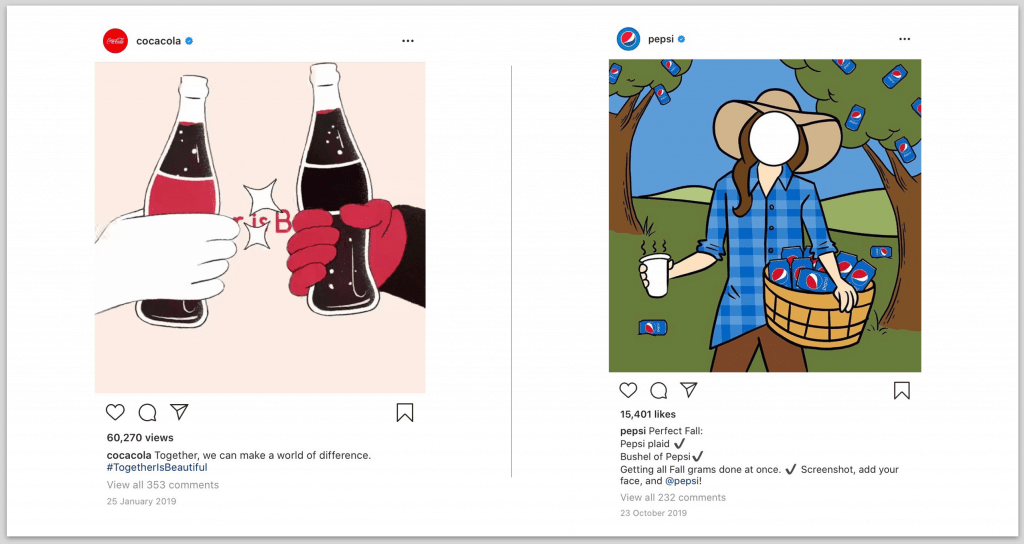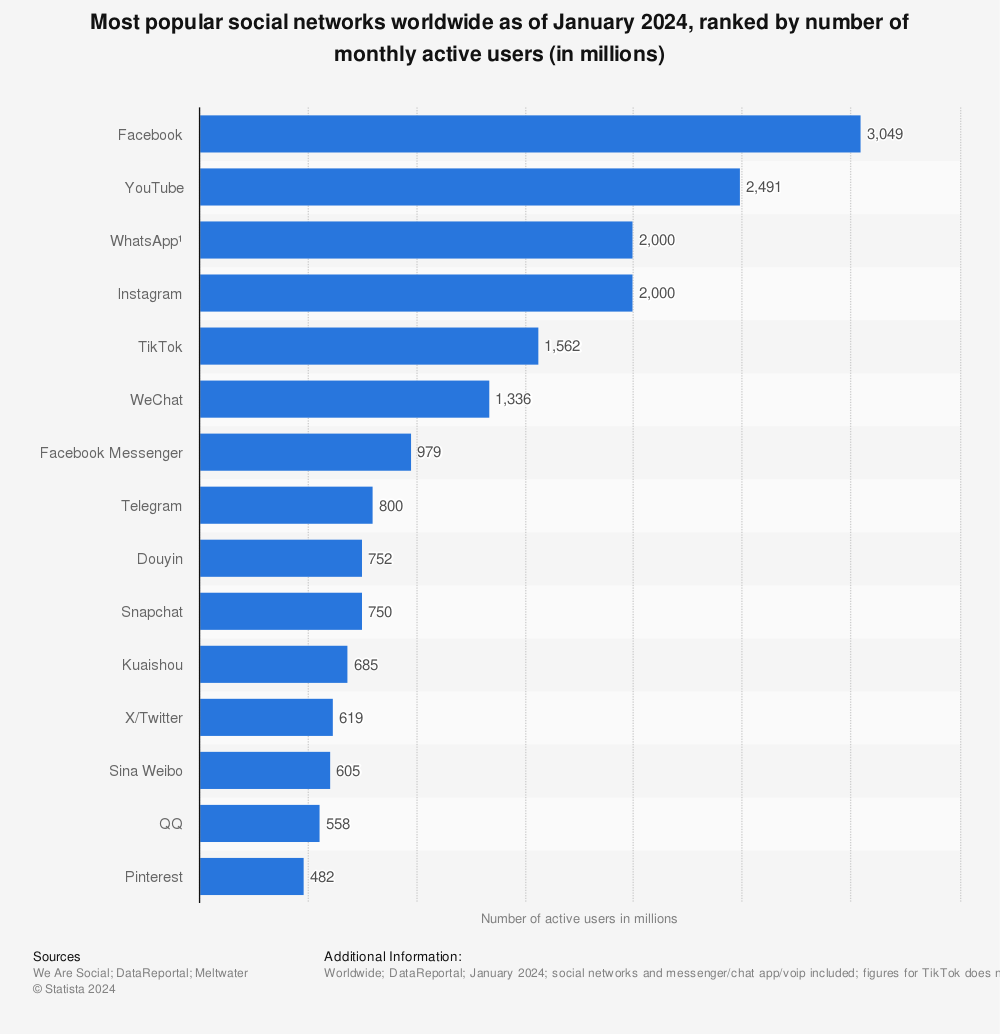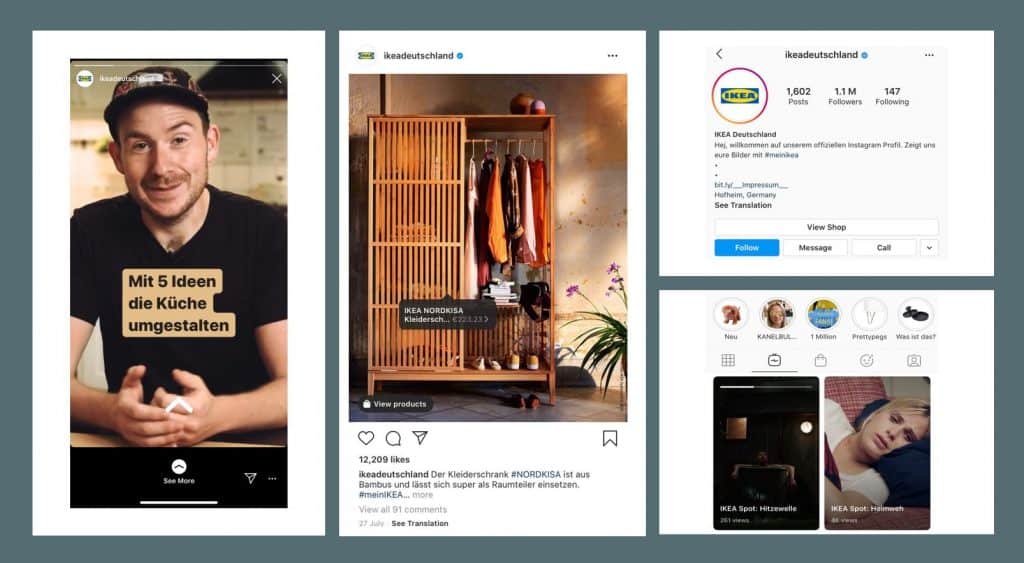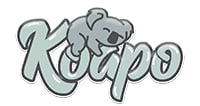Want to ace your Social Media Marketing Campaign? Here is how! This guide presents 5 simple steps to plan and start one. Let this guide answer your how-tos on starting one, and other neat tips you should know before you embark on your journey of planning a social media campaign!
For starters, a Social Media Campaign is a very effective and efficient way for brands and marketers to promote their product or services. Statistica reports a worldwide estimate of 3.6 billion social networks users in 2020. This numbers will still rise exponentially and is forecasted to be above 4 billion by 2023. Using these platforms gives you access to an immense potential customer base, and you should not miss out on an opportunity like this!
Get ready to jot down some notes with these 5 steps below!
Step 1. Setting Goals for a Social Media Campaign
Everything starts with a plan, especially for a social media campaign. This starts with setting your goals. Goals are objectives you hope to achieve from a campaign, be it selling 3000 sets of Spider-man costumes or simply gaining awareness or traffic to your business!
Most importantly, set goals that are realistic and make sense to your business. An effective goal making strategy uses a SMART goal framework. This keeps your goals not only focused and effective but also a dynamic ever-changing process.
SMART Goal Framework
- Specific – A clear, well-defined description of your goal. This can be setting a goal of an increase in profit or specific brand goals. e.g.” 10% increase in profit ” or “Achieve 5000 followers on Instagram”.
- Measurable– Used as a criterion for measuring progress. This is your key performance indicators (KPIs) e.g. increase in conversion, bounce rate and sales.
- Achievable – Goals must be attainable. It should be stretched to pose as a challenge but still be within your resources and capabilities. Using your current analytics to determine your possibility of achieving your goals is suggested.
- Realistic – Also based on analytics, where you measure and come up with realistic goals that your business can accomplish. e.g. Selling 200 pieces of the product in 3 months instead of 1 month time.
- Timely – Match goals to timeframes allocated. This is used to designate and categorize short and long term marketing goals.
Goal Metrics
Some metrics used for goal setting are awareness, engagement, conversions and conversations. These should be included in your goal setting as a measurable metric or used as a potential KPI based on your goals.

Tip:
Goals can be differentiated for specific social media channels. This means that having separate goals for different social media channels makes your analytics more accurate in the long-term. Different platforms offer different measurable metrics tools to monitor your progress.
Step 2. Crafting a Social Media Campaign Strategy
Crafting your campaign strategy is a gruelling process of research and information gathering. Research and analytics are important tools used to make a decision for your business or brand in marketing. To craft a campaign strategy, you will need to know your target audience, competitors and potential marketing channels.
Determine your Target audience
Your brand should already have a general or specific idea on your target audiences. When determining your target audience with a campaign, you should consider some questions of “who are you trying to promote to”, and “what I should hope my campaign will achieve based on my target audience”. Target audiences can be categorized based on their demographics and behaviour which can make it easier to reach them.
With the sheer amount of demographic data available at the click of a button, you can use analytical tools and information of your target audiences to influence your social media campaign strategy.
Based on Datareportal as of July 2020, more than half the world uses social media. The report highlights different audiences being the most influenced by different media channels and can be key to deciding social channels.
Identify Competitors
A social media campaign strategy should include competitors, as businesses can take time to analyze their strategies to improve their own strategies. Competitors are companies or businesses that operate or provide a service/product similar to yours.
Competitors can help you understand what is working and what is not, this determines how and what angle of a marketing campaign you would proceed with. Whilst researching their channels and promotion strategy, you would already know the general course of marketing your brand can take. Take, for example, Coca-Cola and Pepsi are competitors selling similar but differential products.

Other than your direct competitors, you can also explore different brands and their social channels for inspiration for the type of campaign or feed promotion you want. They are not necessarily the best or the best way to promote your business, but more ideas always lead to better inspiration!
Use different Social Media Channels
Your social media campaign strategy needs a channel to start promoting. Consider different channels to promote different campaign types. However, running too many campaigns on different platforms can get confusing. Resources should be allocated efficiently to the top few marketing channels you have decided on to achieve better results.
Channels can be chosen based on your target audiences or how well your competitor is doing in certain channels. Your business might then choose to focus on these channels that have a higher chance of reaching your goal.
Statistica ranked popular social networks in descending order using the number of active users (in millions), as of July 2020.

Find more statistics at Statista
Regardless of the number of users on the popular social media platforms, it is worth considering the best few that your target audience will be using.
According to Datareportal, different platforms highlights different engagement rates as well as interests within the community.
Social Bakers Social Media Trends reports that Facebook and Instagram are particularly great for marketing to specific demographics, which are millennials and Gen Z. Facebook tends to have users interested in a wide range of topics, making it suitable to start!
Facebook and Instagram have specific accounts catered to your business. They are also highly integrated and are great platforms to synchronize your campaigns. Instagram is an amazing platform to reach audiences using stunning visuals and business tools for promotions.
Step 3. Content Creation and Curation
Running a social media campaign requires content that fits your campaign goals and brand identity. Social content needs to be the right type of visuals and videos making it more effective in gaining interactions.
Content Creation
Consider the type and format of content you want to promote on. Be it live streams, images, videos or links, these are important factors to determine best interaction rates based on your goals. Social Bakers Social Media Trends’s research shows different types of posts as well as factors like length of videos in its effectiveness in promotion.
Contents should also be catered to different platforms, for example, channels like Instagram focuses on visuals, therefore, requiring more visually engaging media. Moreover, Facebook is great for sharing videos or live streaming content.
Campaign content type and format
Brand campaigns can jump on trends and certain campaign bandwagons. Creating engaging social content starts with the type and format of your campaign. Campaigns should have a message that is shared throughout. This means that this message would be repeatedly be campaigned to ingrain it into the minds of users.
Types and Formats
Different content types are based on your social channels for example, Instagram has these features for a campaign.
- Live streams – Advertise your product in real-time, where you can immediately respond to queries or maybe hold an auction!
- Posts – Posts includes picture posts or video posts. Campaigns posts should attract attention and be visually suited towards your brand.
- Instagram Stories – Instagram Stories have a 24hr visibility limit. It can be used daily to keep up with users and general promotions! Here are some tips for your stories!
- Instagram Highlights – Highlights are stories that you can pin to your profile for people to view anytime, as long as you put it there. It can be used to showcase your stories or content that you’ve done previously! Read our article on All you need to know about Instagram Highlights here!

Formats of campaigns include Influencer marketing, giveaways or hashtags marketing. It is explained with many examples of successful campaigns done on Instagram here! Certain campaigns can yield different results in both short-term and long-term durations.
Content Curation
Many brands might want to curate content from other users to generate interest or simply just to keep their content updated. This can be done by content curation, where certain brands seek content from already existing users to re-post or collaborate with. There are many content curation tools already in the market but there are amazing free ones such as Flipboard and Medium which you can start with.
Tip:
The best content is those with high interaction and engagement rates. Sticking with a theme for a campaign is a rule of thumb when planning visuals. Campaigns that attract the most attention are those that are visually compelling, therefore a good platform to start would be on Instagram!
Step 4. Promote
After deciding on your content, planning your theme and hashtags etcetera, it is time to publish and promote your content. Throughout your campaign period, promote your message effectively with repetition. Repeated messages are known to be more effective for communication.
Promote Effectively
- Balance the type of content that is used to drive traffic – Mix up your campaign with posts, videos or stories – whatever works best to keep your audience engaged.
- Consider some factors that can make your content more likely to be viewed or engaged with – promoting products of different colours or aesthetics makes users more compelled to look at it. This also means taking note of popular times when consumers use social media, suggests an optimal time to post.
- Have a Posting schedule – Set up a calendar for your campaign postings. They’re great to plan ahead and maximize efficiency by planning eg. a week’s worth of content.
- Increase traffic to your actual website – Besides your campaigns on your socials, remember to direct users to your main platform that drives revenue, be it your website or an e-commerce platform.
Tip:
Remember to balance promotional content to your users, so that they won’t be overloaded with the same message or feel pressured to becoming a customer.
Step 5. Review analytics, performance tracking
Social Media Analytics
From the start of your campaign, identify analytical tools that you will be able to use to track how you’re doing. Analytics is very important as you can use past data to know who, what where your users are generally at and optimize your campaigns for maximized results.
Let’s say you started a giveaway campaign on Instagram. It’s easy to set up, post some photos with hashtags. Tracking specific content is super easy with an Instagram Business Account. Your posts or stories have individual insights such as interactions(profile visits/website clicks) and discovery(how many people seen your content and where they find it at). It also shows your audiences, telling you more about people who see your content as well as growth metrics.
Besides in-app analytical tools, there is software available on the net for your business to use. Some even combine different social media platforms for you to view the analytics in one dashboard making it super-efficient in when measuring performance. You can start free with Cyfe and Quintly or try out others that are available out there!
Performance Tracking
Now you have the data, you can start working on target marketing. If certain posts react well to your target audience or have better KPI, use it as a reference to focus more marketing efforts on posts similar to it. Tracking your performance gives you visibility for future posts as well as indicators on how well your campaign is doing! Doing A/B marketing testing could be used in performance tracking. It is a good practice to re-evaluate your marketing efforts often and make most of a campaign.
Tip:
Do note that insights on Instagram can only be viewed for the past week and when posting using a business account! If you do not have an Instagram business account, check out the features of one in this guide.
Managing your Social Media Platforms
Updating and managing your socials often is really important to keep users updated and stay relevant. It already is tough just trying to create or curate content for your social media. Using software as a tool to manage your social media engagement saves you a lot of time and allows you to focus on the more important things!
Instagram Management
Especially on Instagram, reaching an organic following that engages with your content could be difficult and time-consuming. Using software to easily manage your account engagement such as Upleap and Kenji will be beneficial in the long run. Upleap connects you to a dedicated account manager that helps you grow likes, followers and exposure whilst Kenji is an Instagram bot powered by A.I. doing the same thing.
Following these 5 very simple steps to plan your social media campaign is easy! You never know what campaigns could be featured next, so start exploring and successfully planning one now!




